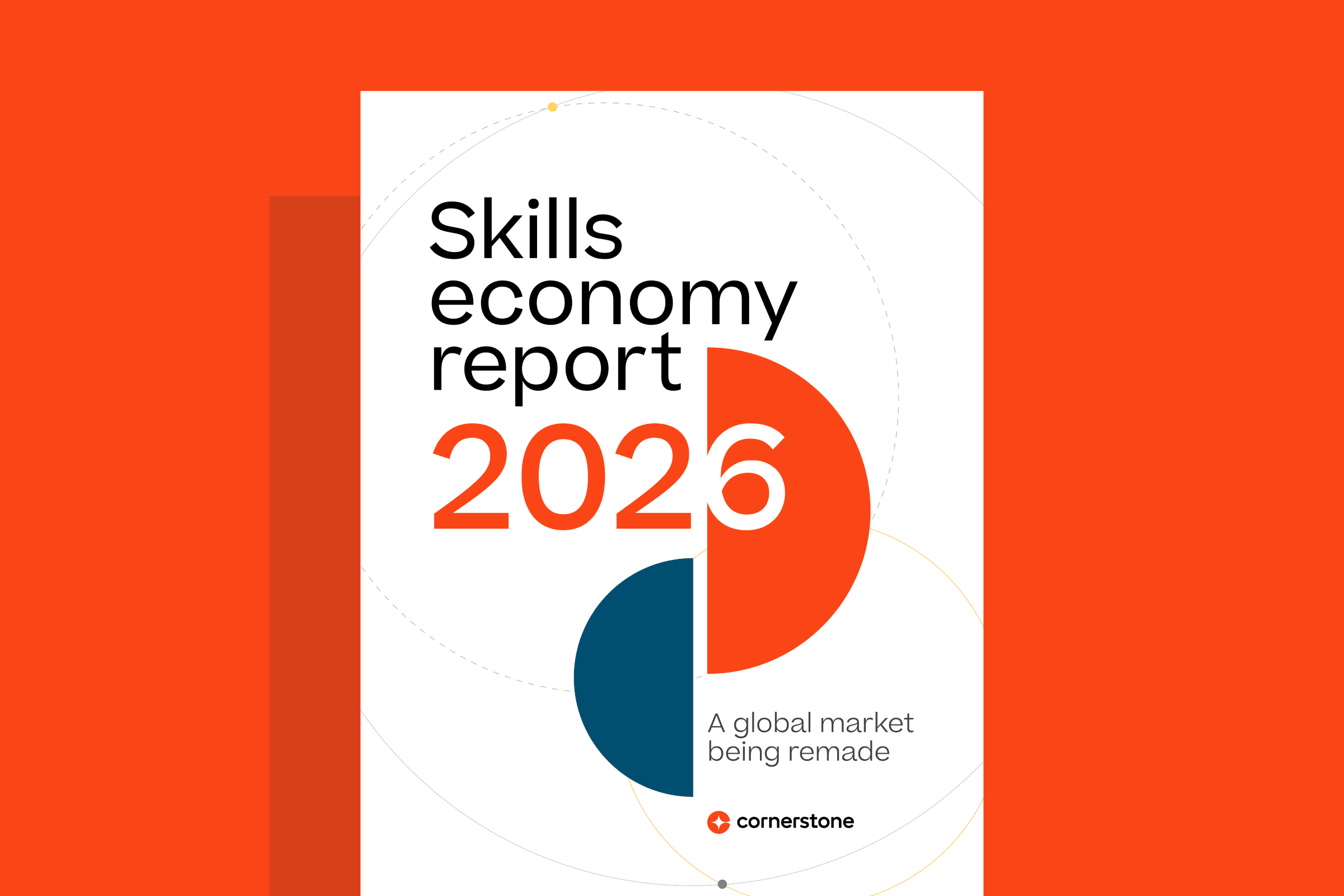There's a storm brewing in the realm of recruiting. Today's employees have to grapple with an always-on, mobile-enabled environment, filled with new technology. But with up to five generations represented in the workforce at the same time, not every employee is armed with the skills needed to keep up with the fast pace of today's work. The skills gap is palpable, and while L&D teams focus on helping close it internally, the pressure is on recruiters to attract outside candidates that can hit the ground running, says Thomas Boyle, principal consultant at Cornerstone OnDemand.
According to a report by PWC, 72 percent of CEOs are concerned about the availability of employees skills. In an environment where organizations are competing for limited top talent, there is no room for subpar candidate experiences. Boyle and Josh Zywien, VP of marketing at SmashFly, discussed this challenge in their most recent webinar—but when time ran out, some questions remained.
Here, Boyle and Zywien answer some additional questions to help organizations create a framework for recruiting that helps close the skills gap.
What are some examples of transparency during the hiring process?
Boyle: Candidates are looking for transparency throughout the entire hiring process. Here are some simple ways to boost transparency:
- Clearly define job descriptions.
- Share your hiring process and timelines.
- Provide self-service tools so that candidates can check the status of their application.
- Share your interview process and selection timelines.
What is a 'talent community' and how can it help build a recruiting pipeline?
Zywien: Think about the last time you stumbled on a new retailer or e-commerce brand. Maybe you checked out their products and liked their brand, but you weren't ready to buy. If that company didn't offer you any other way to engage other than to buy, you'd walk away and you'd be a lost lead for that company.
Recruiting isn't much different. The reality is that most candidates are passive and unready (or unwilling) to apply. If the only call-to-action you give them is to apply (e.g. buy your product), then those passive candidates will walk away—and you'll have to pay to attract them again later. An online talent community (built through social media, an e-newsletter or recruiting software) is a marketing tool—a simpler, less committal way for candidates to stay engaged with a company they're interested until they're ready to apply to a job. This way, when they are ready to change jobs, they think of your company first.
When a job-seeker applies multiple times at the same company, but gets rejected every time, how can you ensure that this person still has a great experience?
Boyle: The best way to ensure a positive experience is to provide candidates with as much detail as possible. Start by clearly defining the basic minimum qualifications on job descriptions, measuring candidates against these requirements them during pre-screening and providing meaningful feedback.
Zywien: One of the benefits of a CRM system is that it can trigger emails to candidates based on specific behavior — and to change up the message in those emails over time so that no candidate is getting the same, repetitive message over and over again.
For a serial applicant, rather than triggering the same old rejection email from the applicant tracking system, why not set your CRM to follow-up with an invitation to join your talent network. Change it up. Just try something that'll make someone walk away not feeling flat-out rejected and ignored.
Do you recommend notifying candidates that they have not been selected?
Boyle: Chances are your candidates aren't waiting three to five months to hear back from you—at least not the good ones. I would recommend shortlisting your top candidates down to the top five and notifying everyone else of their rejection immediately. For the remaining five, I would be extremely transparent in terms of the process and length.
What are some industry benchmarks to follow with regard to how long it takes or how much it costs to hire for different roles?
Zywien: Gartner's TalentNeuron (formerly CEB Talent Neuron and Wanted Analytics) is an excellent tool for analyzing talent supply and demand for a particular job. It provides a hyper-local look at how long it typically takes to hire for a role in your region, and offers average cost-per-hire benchmarks.
For a free resource, SHRM also publishes annual benchmarks for talent acquisition, which include broader time-to-fill and cost-per-hire metrics.
Do you find many companies are not prepared to offer a well-planned on-boarding experience for new employees?
Boyle: Absolutely. In fact, if you asked your candidates, most would agree that the on-boarding experience is indicative of the broader employee experience. All too often, on-boarding is seen as a one-time tactical process meant to manage forms and compliance during a new hire's first few days or weeks at work. But this is the wrong approach—organizations should start on-boarding before day one, and continue throughout the first year of employment, creating a more continuous on-boarding process that lends itself well to mobility and growth through the organization.
Do you see HR teams becoming key content producers?
Zywien: I see HR becoming more of a publisher and internal communicator. Increasingly, HR teams are sending monthly internal newsletters to keep employees up-to-date on what's happening in the business, telling stories about employee growth and wins or maintaining an internal blog to showcase the company's culture. There's so much goodness in most companies. HR seems like the natural conduit for telling those stories.
These questions were submitted during our recent webinar, "Next Generation Framework for Recruiting in the Digital Age." View the webinar here.
Photo: Creative Commons


